Sensory Room for Children Denver
A Calming Space for Those with Sensory Needs

While our team does everything we can to ensure that your child’s dental treatment is as comfortable and pleasant as possible, we do understand that some of our patients might struggle with sensory needs. These could involve sensitivities to sounds, sights, and smells that could affect how they feel during their visit, oftentimes making them uncomfortable. Fortunately, Dr. Patrick can adapt to your little one’s needs by providing treatment in our sensory room for greater comfort and more effective care.
Sensory processing refers to the mechanisms of how we feel. It is how we use what we sense to make sense of the world around us, and it underpins every aspect of human functioning. For most, the body-brain processing of registering, interpreting, and integrating sensation (sound, touch, sight, movement, position, pressure, taste, smell) is mundane and goes entirely unnoticed. Research shows that as many as 1 in every 6 children experiences differences in sensory processing that may affect aspects of everyday life functions. The reality is that every child processes and experiences the world differently.
For children with disordered sensory processing, fitting into an inflexible sensory world can be exhausting, troubling, and effortful. At Wash Park Pediatric Dentistry we understand that the dental environment can create unique challenges for children with sensory needs. Dr. Patrick and his team can adapt to your child’s needs by providing treatment in our sensory room for greater comfort and more effective care. It is a fantastic option for patients with severe anxiety, Autism, and sensory processing disorders.
What Is a Sensory Room?
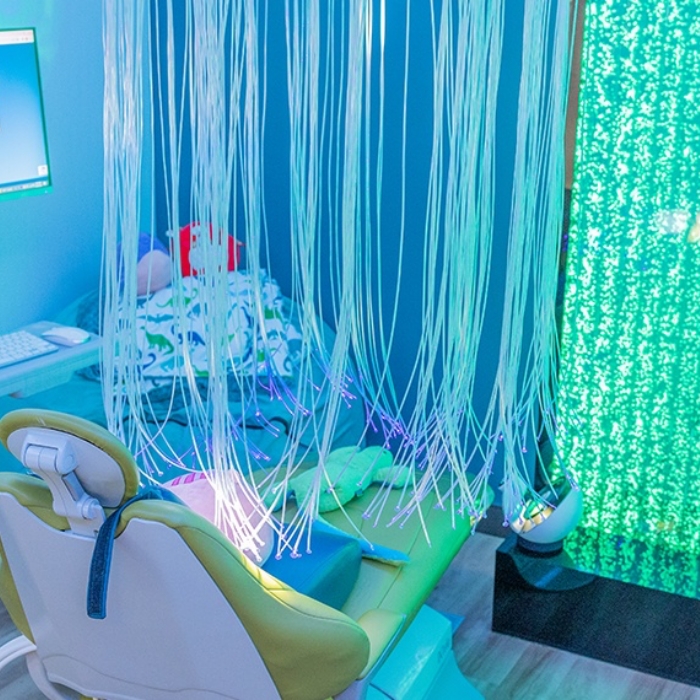
We offer a sensory adapted dental environment (SADE) at Wash Park Pediatric Dentistry. This room is designed to minimize the impact of various sights and sounds so that they can feel more at ease throughout their visit. This room was designed for kiddos who are on the Autism spectrum, have sensory processing disorder, or may have dental anxiety. While it was designed for children with disordered sensory processing, all patients, including neurotypical children, are welcome to enjoy it.
Our Team’s Special Training & Approach
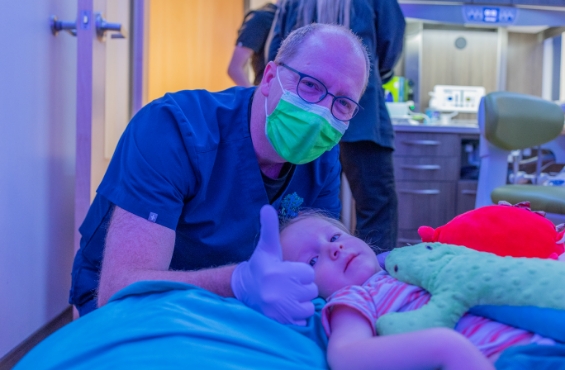
“A disability does not mean an inability.”
Every member of our team receives training to better understand the interactions between sensory processing, regulation, and relationship. This helps our team better understand how a child with disordered processing relates with their environment and communicates with those in the world around them.
We treat patients with kindness and respect. We strive to blend a child’s lived experience with clinical best practices to set a child up for success with their oral health journey. We are always learning, staying current with the clinical language used outside of dentistry. We listen to parents and caregivers to understand a child’s specific needs, and adjust our approach to best meet them where they are. Parents know their kids best. They are a valued part of our approach.
What We Use in Our Sensory Room
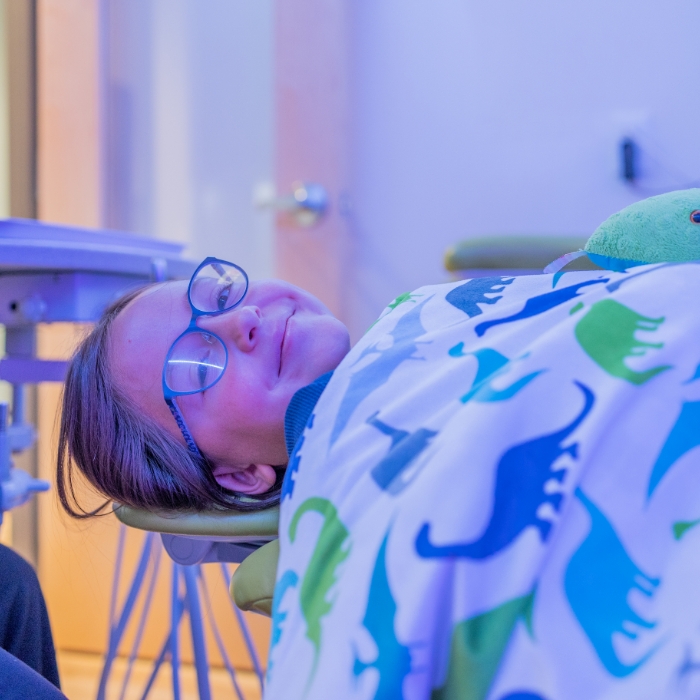
We are one of a few dental practices in the entire country in a non-academic setting with a specific space for patients with disordered sensory processing, anxiety, and special health care needs. Dr. Patrick consulted with experts across the United States to set up the physical space in our office. We are always learning, adjusting our skillset to best use the space. Three of the most notable features include:
The Jellyfish
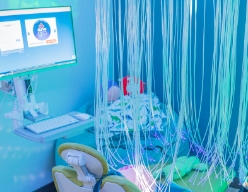
Instead of using fluorescent overhead lighting that is stationary and bright, we added a fiber optic light curtain that can change colors as well as provide tactile stimulation for children. The jellyfish can also have its distance adjusted so that it can be out of your child’s way if they prefer it.
The Bubble Wall

Not only does this water feature change colors like the jellyfish, but it also creates an appealing visual and incredibly calming movement and sound. If your little one feels too sensitive to the noises or motion, we can turn it off.
Cordless Cleaning
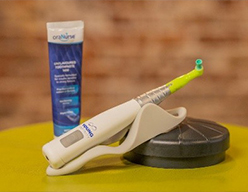
Generally speaking, dental cleaning tools often create vibrations and noises while allowing our team to polish pearly whites. However, if necessary, we can switch to cordless instruments that are quieter and vibrate less, and it allows us to move with the patient so that they can enjoy sitting in any position that’s most comfortable for them. Dr. Patrick has no problem treating kids on the floor, in a bean bag chair, or wherever they feel most comfortable.
Additional Features
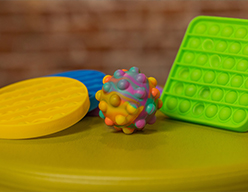
Other than the main colorful and visually stunning features of our sensory room, we also utilize many other tools to improve your child’s sensory experience, such as:
-
LED lights
-
Sensory/Fidget Toys
-
Noise Cancelling Headphones
-
Weighted blankets and stuffed animals
-
Ceiling-mounted TV for entertainment
-
Unflavored and non-textured toothpaste








